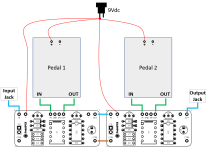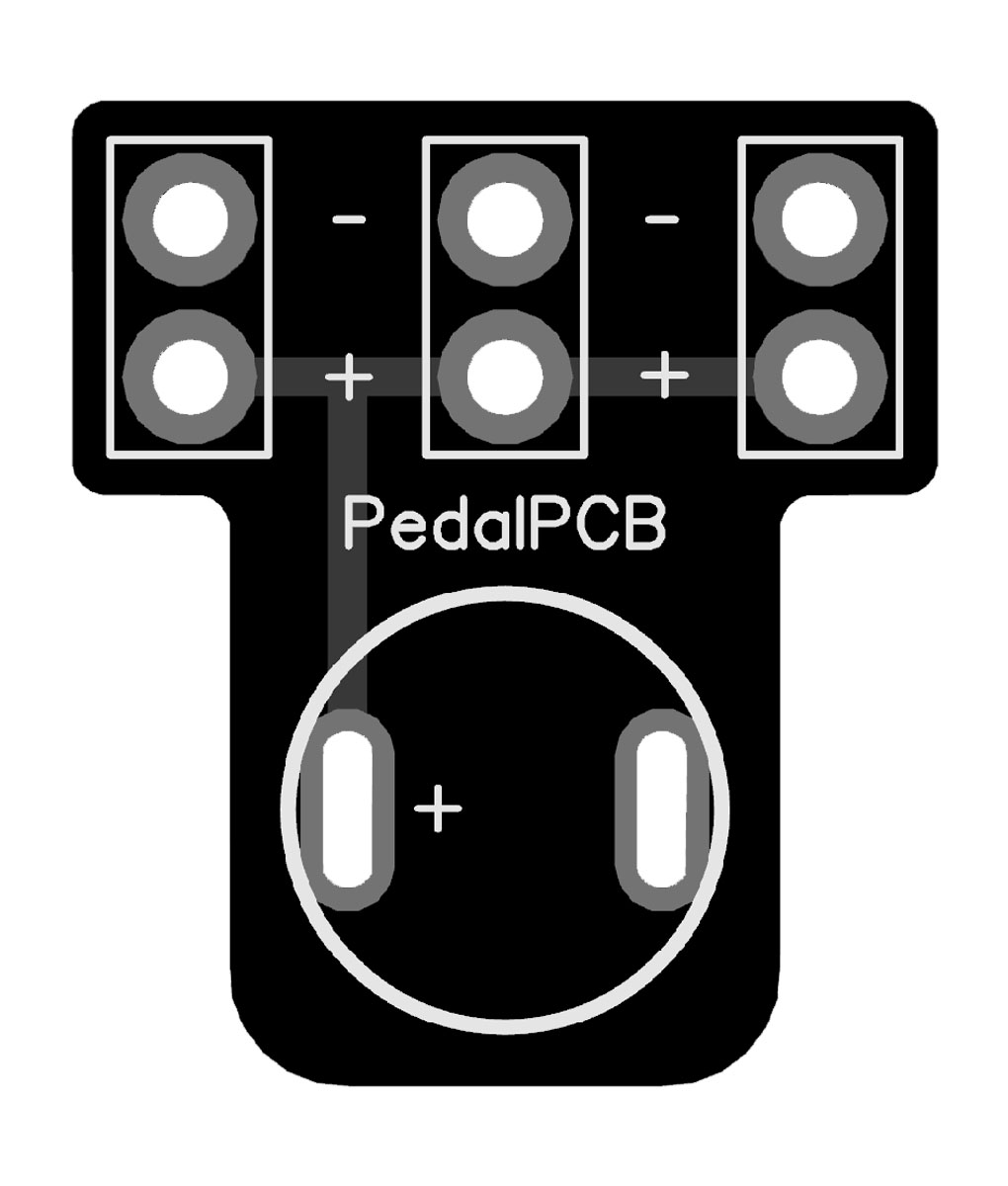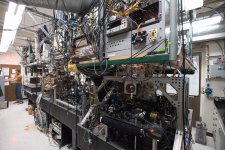Dirty_Boogie
Well-known member
I'm about to start boxing my dual Victory (Cetus and John) pedal, controlled by PedalPCB intelligent relay boards. That means 9V needs to go to 4 boards in the enclosure. Since both pedal circuits use charge pumps to goose the voltage up to 18V, and I have an inherent distrust in charge pumps, due to the noise/whining they tend to introduce, I'm trying to figure out the best way to wire this pedal. I will be configuring the intelligent relay for A/B switching (like an amp's channel switching), so both pedals will never be used at the same time, which would reduce total pedal noise. With my Truetone 1-Spot power supply, I know that if I feed individual pedals with their own isolated 9V line, I'm getting the best possible power isolation and filtering. But, for this multi-pedal, that means I'd need to use at least 3 9V lines (1 each for the pedal PCB's, and 1 shared for the relay boards), which I'd rather not do. Other than wiring the power as shown below, or going with something that is going to take up a lot of space and add cost (http://www.muzique.com/lab/9v_iso.htm), any other best practices or approaches inside of the enclosure to perform some level of separation or filtering?
 ,
,
 ,
,




